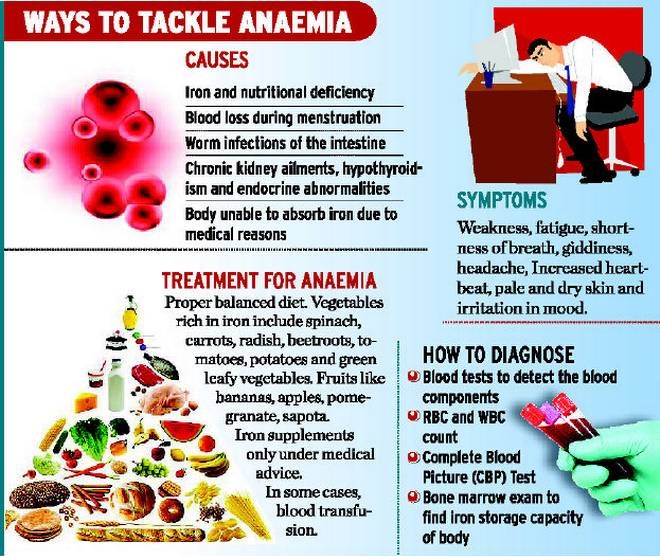International Relations
50 Years of India Bangladesh Relations
Why in News
Commemorating 50 years of the 1971 India-Pakistan war that led to the liberation of Bangladesh, a 122-member contingent of the Bangladesh Armed Forces has recently participated in the 72nd Republic Day parade.
- This year, India and Bangladesh are also celebrating 50 years of the establishment of their ties.
Key Points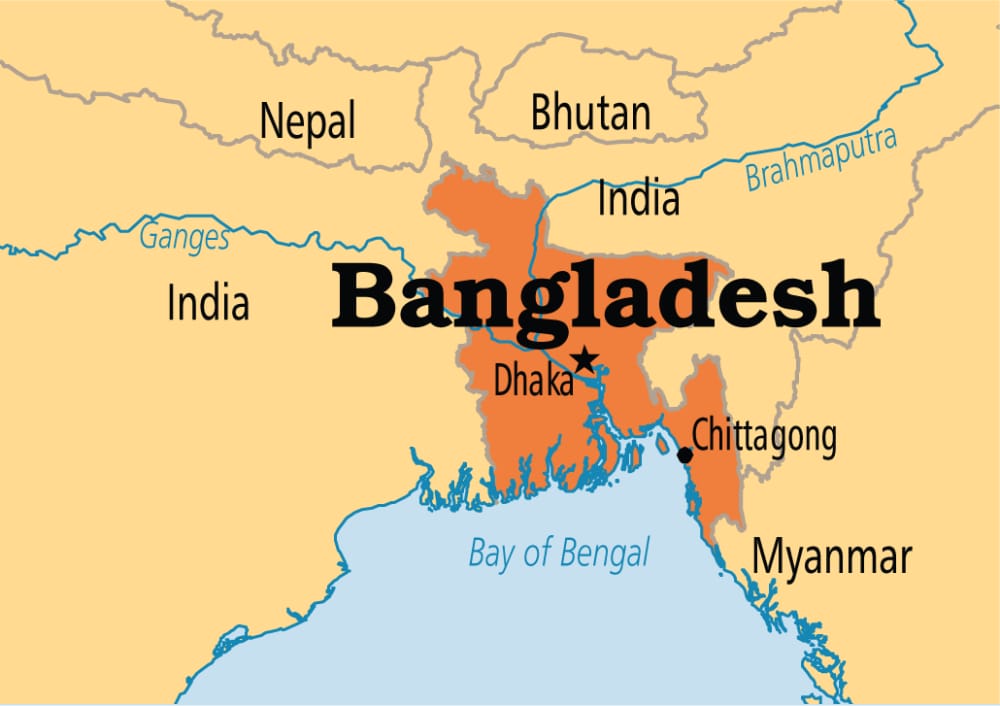
- This is the third time the Republic Day parade in India has witnessed the participation of a military contingent from abroad.
- Previously French troops marched in 2016 and UAE troops in 2017.
- Bangladesh War of Independence: Vijay Diwas is observed on 16th December every year to mark India's victory over Pakistan in the 1971 war.
- The Government of India, on 3rd December 1971, declared that it would go for war with Pakistan to save Bengali Muslims and Hindus.
- This war was fought between India and Pakistan for 13 days.
- On 16th December 1971, the chief of the Pakistani forces with 93,000 soldiers had surrendered unconditionally to the allied forces consisting of Indian Army and Mukti Bahini in Dhaka.
- Mukti Bahini refers to the armed organizations that fought against the Pakistan Army during the Bangladesh Liberation War. It was a guerrilla resistance movement.
- Bangladesh was born on this day. Hence, Bangladesh celebrates its independence day (Bijoy Dibos) on 16th December every year.
India-Bangladesh Relations
- India was one of the first countries to recognize Bangladesh and establish diplomatic relations immediately after its independence in December 1971.
- Defence Cooperation:
- Various Joint exercises of Army (Exercise Sampriti) and Navy (Exercise Milan) take place between the two countries.
- Border Management: India and Bangladesh share 4096.7 km. of border, which is the longest land boundary that India shares with any of its neighbours.
- The India-Bangladesh Land Boundary Agreement (LBA) came into force following the exchange of instruments of ratification in June 2015.
- Cooperation over Rivers:
- India and Bangladesh share 54 common rivers. A bilateral Joint Rivers Commission (JRC) has been working since June 1972 to maintain liaison between the two countries to maximize benefits from common river systems.
- Economic Relations:
- Bangladesh is India’s biggest trade partner in South Asia. India’s exports to Bangladesh for financial year 2018-19 (April-March) stood at US 9.21 billion USD and imports from Bangladesh for the same period stood at US 1.22 Billion USD.
- Bangladesh has appreciated the Duty-Free and Quota Free access given to Bangladeshi exports to India under South Asian Free Trade Area (SAFTA) since 2011.
- Cooperation in Connectivity:
- Both countries jointly inaugurated the newly restored railway link between Haldibari (India) and Chilahati (Bangladesh).
- Welcomed the signing of the second addendum to the Protocol on Inland Water Transit and Trade (PIWTT).
- Agreed to an early operationalization of the Bangladesh-Bhutan-India-Nepal (BBIN) initiative Motor Vehicles Agreement through the expeditious signing of the Enabling MoU for Bangladesh, India and Nepal to commence the movement of goods and passengers, with provision for Bhutan to join at a later date
- Cooperation in Power Sector:
- This has become one of the hallmarks of India- Bangladesh relations. Bangladesh is currently importing 1160 MW of power from India.
- Partnership on Multilateral forums:
- India thanked Bangladesh for supporting India in its election to the United Nations Security Council.
- Both countries agreed to continue working together towards achieving early reforms of the UN Security Council, combating climate change, attainment of the Sustainable Development Goals (SDGs) and protection of the rights of migrants.
- Highlighted that regional organisations such as the South Asian Association for Regional Cooperation (SAARC) and the Bay of Bengal Initiative for Multi-Sectoral Technical and Economic Cooperation (BIMSTEC) have an important role to play.
- Bangladesh thanked India for convening the SAARC leaders Video Conference in March 2020 and for creation of the SAARC Emergency Response Fund to counter effects of the global pandemic in the South Asian region.
- Bangladesh will assume chairmanship of the Indian Ocean Rim Association (IORA) in 2021 and requested the support of India for working towards greater maritime safety and security.
- Recent Development:
- Recently, India and Bangladesh signed seven agreements and also inaugurated three projects to deepen their partnership.
- The use of the Chattogram and Mongla ports in Bangladesh for movement of goods to and from India, particularly from Northeastern India.
- Use of Bangladesh’s Feni river for drinking water supply in Tripura.
- Further areas of Cooperation:
- The two countries need to focus on priority areas, such as investments, security connectivity development, cross border energy cooperation, blue economy, cultural economy, environment and disaster management etc.
- Resolve the refugees (Rohingyas) crisis.
- During Covid 19:
- Reiterating the highest priority India attaches to Bangladesh under India’s Neighbourhood First policy, India assured that vaccines for Covid-19 would be made available to Bangladesh as and when produced in India.
- India also offered collaboration in therapeutics and partnership in vaccine production.
- Emerging Disputes:
- There should be efforts to resolve pending issues concerning sharing of waters, resolving continental shelf issues in the Bay of Bengal, bringing down border incidents to zero, and managing the media.
- Bangladesh has already raised concerns over roll out of the National Register of Citizens (NRC) in Assam, an exercise carried out to identify genuine Indian citizens living in Assam and weed out illegal Bangladeshis.
- Currently, Bangladesh is an active partner of the Belt and Road Initiative (BRI) that Delhi has not signed up to.
- In the security sector, Bangladesh is also a major recipient of Chinese military inventory, including submarines.
Indian Economy
World Economic Outlook: IMF
Why in News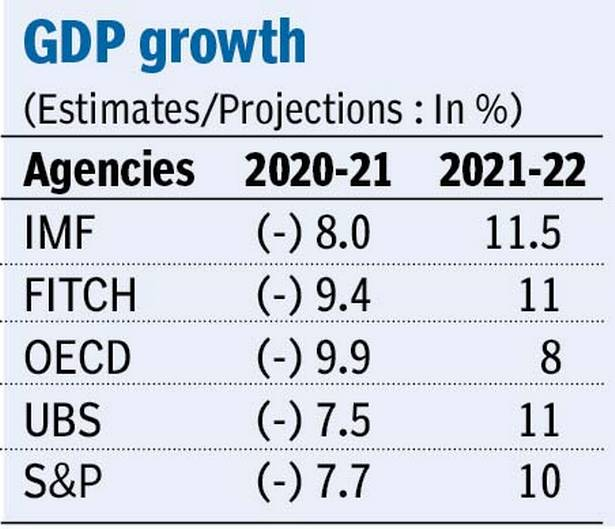
Recently, the latest World Economic Outlook of the International Monetary Fund (IMF) has estimated that India’s Gross Domestic Product (GDP) will grow by 11.5% in the Financial Year (FY) 2021-22.
Key Points
- India Specific Projections:
- FY 2020-21: For the current fiscal, the IMF had forecast a record 10.3% contraction.
- FY 2021-22: For the next fiscal, starting from April 1st, GDP growth projection is at 11.5%, 2.7% higher than the projection made in October, 2020.
- Last October, the IMF had projected an 8.8% real GDP growth for India in FY 2021-22, highest globally.
- FY 2022-23: In FY 2022-23, the economy will likely grow 6.8%.
- Governments Projection for 2020-21:
- The latest revision for the current fiscal is higher than the government’s first advance estimate of 7.7% and also the RBI’s estimate of 7.5%.
- Reason for Increase in the Estimates by IMF:
- India has taken very decisive action, very decisive steps to deal with the pandemic and to deal with the economic consequences of it.
- Government Measures to Deal With the Pandemic:
- Reserve Bank of India’s Covid19 Economic Relief Package
- Pradhan Mantri Garib Kalyan Yojana: The government announced Rs 1.70 lakh crore relief package under the newly framed Pradhan Mantri Garib Kalyan Yojana for the poor to help them fight the battle against covid-19.
- Atmanirbhar Bharat Abhiyan (or Self-reliant India Mission): The Self-Reliant India Mission aims towards cutting down import dependence by focussing on substitution while improving safety compliance and quality goods to gain global market share.
- Government announced liquidity measures for businesses, especially Micro, Small and Medium enterprises (MSMEs) under the Atmanirbhar Bharat Abhiyan.
- Global Projections:
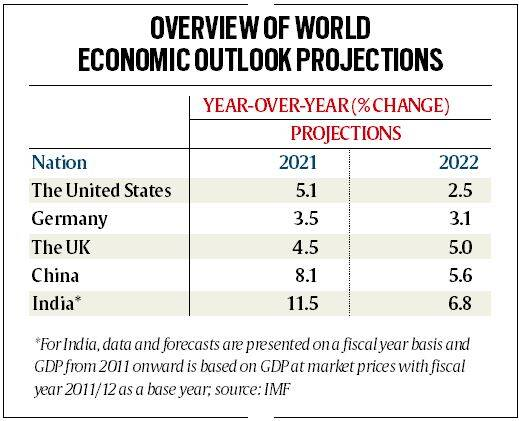
- Global Economy:
- The global economy is projected to grow 5.5% in 2021 and 4.2% in 2022.
- The IMF also saw a narrower 3.5% contraction in world output in 2020 as opposed to a 4.4% decline seen earlier.
- It attributed the 0.3% point upward revision for 2021 to “expectations of a vaccine-powered strengthening of activity later in the year and additional policy support in a few large economies.
- The global economy is projected to grow 5.5% in 2021 and 4.2% in 2022.
- Global Economy:
- Global Trade Volumes:
- They are forecasted to grow about 8% in 2021.
- The IMF expects oil prices to rise in 2021 by just over 20% from the low base for 2020 but they will still remain well below their average for 2019.
- Non-oil commodity prices are also expected to increase with those of metals, in particular, projected to accelerate strongly in 2021.
- Other Economies with High percentage of Growth:
- China would grow 8.1% in 2021, followed by Spain (5.9%) and France (5.5 %).
- China, which was the only major country to register a growth rate of 2.3 % in 2020, will expand 5.6% in 2022.
- Increased Inequality:
- The report highlighted the pandemic-induced acceleration in inequality by reiterating that close to 90 million people are likely to fall below the extreme poverty threshold during 2020-21 as workers with less education, women, youth, those in contact-intensive sectors, and those informally employed suffer disproportionate livelihood and income losses.
- The pandemic is expected to reverse the progress made in poverty reduction across the past two decades.
- It can be noted that recently, the Inequality Virus Report, released by Oxfam International, has also found that the Covid pandemic deeply increased the existing inequalities in India and around the world.
International Monetary Fund
- The IMF was set up along with the World Bank after the Second World War to assist in the reconstruction of war-ravaged countries.
- The two organisations were agreed to be set up at a conference in Bretton Woods in the US. Hence, they are known as the Bretton Woods twins.
- Created in 1945, the IMF is governed by and accountable to the 189 countries that make up its near-global membership.India joined on December 27, 1945.
- The IMF's primary purpose is to ensure the stability of the international monetary system — the system of exchange rates and international payments that enables countries (and their citizens) to transact with each other.
- The Fund's mandate was updated in 2012 to include all macroeconomic and financial sector issues that bear on global stability.
- Other Reports by IMF:
Indian Economy
Investment Trends Monitor Report: UNCTAD
Why in News
According to the recent Investment Trends Monitor Report issued by the United Nations Conference on Trade and Development (UNCTAD), global Foreign Direct Investment (FDI) collapsed in 2020 by 42% to an estimated USD 859 billion from USD 1.5 trillion in 2019.
- Such a low level was last seen in the 1990s and is more than 30% below the investment decline that followed the 2008-2009 global financial crisis.
Key Points
- Global Trend:
- India and China:
- India witnessed a 13% year-on-year rise, the highest among key nations, in FDI inflows in 2020, China’s rose by 4%.
- In absolute terms, China remained way ahead, with an inflow of as much as $163 billion, while India’s stood at $57 billion.
- Advanced Economies:
- The UK and Italy saw an over 100% crash each in FDI inflows, followed by Russia (96% drop), Germany (61%), Brazil (50%), the US (49%), Australia (46%) and France (39%).
- Developing Economies:
- Developing economies drew as much as 72% of global FDI in 2020 – their highest share on record.
- Asian nations did particularly well, attracting USD 476 billion in FDI in 2020.
- India and China:
- Future Projection:
- The uncertainty about the Covid-19 evolution will continue to hamper global FDI inflows in 2021, threatening sustainable recovery prospects.
- Reason for the Rise in FDI in India:
- Inflows into digital sector. The sector has particularly high return capabilities in India as favourable demographics, substantial mobile and internet penetration, massive consumption along with technology uptake provides great market opportunity for a foreign investor.
- India’s Measures to Increase FDI:
- In 2020, schemes like production-linked incentive (PLI) scheme for electronics manufacturing, have been notified to attract foreign investments.
- In 2019, the Central Government amended FDI Policy 2017, to permit 100% FDI under automatic route in coal mining activities.
- FDI in manufacturing was already under the 100% automatic route, however in 2019, the government clarified that investments in Indian entities engaged in contract manufacturing is also permitted under the 100% automatic route provided it is undertaken through a legitimate contract.
- Contract Manufacturing: Production of goods by one firm, under the label or brand of another firm.
- Foreign Investment Facilitation Portal (FIFP):
- It is the online single point interface of the Government of India with investors to facilitate FDI. It is administered by the Department for Promotion of Industry and Internal Trade, Ministry of Commerce and Industry.
Foreign Direct Investment
- About:
- FDI is an investment made by a firm or individual in one country into business interests located in another country.
- The key feature of foreign direct investment is that it establishes either effective control of, or at least substantial influence over, the decision-making of a foreign business.
- This makes it different from portfolio investments in which an investor merely purchases equities of foreign-based companies.
- Importance:
- FDI is important because it gives countries access to external capital, technology, market access and tax contributions.
- Types: FDI are commonly categorized as being horizontal, vertical or conglomerate.
- Horizontal:
- A horizontal direct investment refers to the investor establishing the same type of business operation in a foreign country as it operates in its home country.
- Vertical:
- A vertical investment is one in which different but related business activities from the investor's main business are established or acquired in a foreign country, such as when a manufacturing company acquires an interest in a foreign company that supplies parts or raw materials required for the manufacturing company to make its products.
- Conglomerate:
- A conglomerate type of foreign direct investment is one where a company or individual makes a foreign investment in a business that is unrelated to its existing business in its home country.
- Since this type of investment involves entering an industry the investor has no previous experience in, it often takes the form of a joint venture with a foreign company already operating in the industry.
- Horizontal:
- Components: FDI has three components, viz., equity capital, reinvested earnings and intra-company loans.
- Equity Capital:
- It is the foreign direct investor’s purchase of shares of an enterprise in a country other than its own.
- Reinvested Earnings:
- Comprise the direct investors’ share (in proportion to direct equity participation) of earnings not distributed as dividends by affiliates, or earnings not remitted to the direct investor.
- Such retained profits by affiliates are reinvested.
- Intra-company loans or intra-company debt transactions:
- Refer to short- or long-term borrowing and lending of funds between direct investors (or enterprises) and affiliate enterprises.
- Equity Capital:
- Routes: Routes through which India gets FDI:
- Automatic Route: In this, the foreign entity does not require the prior approval of the government.
- Government route: In this, the foreign entity has to take the approval of the government.
United Nations Conference on Trade and Development (UNCTAD)
- Establishment:
- UNCTAD is a permanent intergovernmental body established in 1964.
- Headquarter:
- It is a permanent intergovernmental body headquartered at Geneva in Switzerland.
- Objective:
- It promotes development-friendly integration of developing countries into the world economy.
- Reports Published:
- Trade and Development Report
- World Investment Report
- The Least Developed Countries Report
- Information and Economy Report
- Technology and Innovation Report
- Commodities and Development Report.
Science & Technology
PM2.5 and Anaemia
Why in News
A recent study by IIT delhi has tried to establish the association between ambient PM 2.5 exposure and occurrence of anaemia among children under the age of 5 years of age in India.
- PM2.5 refers to particles that have diameter less than 2.5 micrometres (more than 100 times thinner than a human hair) and remain suspended for longer.
- These particles are formed as a result of burning fuel and chemical reactions that take place in the atmosphere. Natural processes such as forest fires also contribute to PM2.5 in the air. These particles are also the primary reason for occurrence of smog.
Key Points
- Findings
- Extended periods of exposure to PM 2.5 can lead to anaemia among children under the age of 5 years. About 63% of the included children were found to be anaemic.
- Children at Risk:
- Young Children: Children with lower age had higher vulnerability of being anaemic.
- Poverty: Children from lower wealth index levels had higher percentages of anaemia.
- Maternal Anaemia: Children born to anaemic women have higher chances of developing anaemia.
- Intensity:
- Higher PM2.5 levels exposure, decreases the average haemoglobin levels in children.
- Significance:
- The study is important because so far anaemia has been looked at through the prism of nutrition deficiency, specifically that of iron.
- Exposure to air pollution, especially PM 2.5, has been shown to induce systemic inflammation.
- Inflammation refers to the body's process of fighting against things that harm it, such as infections, injuries, and toxins, in an attempt to heal itself.
- Over time, chronic inflammation may have a negative impact on tissues and organs.
- Current Scenario: According to the India National Family and Health Survey 2015–2016 (NFHS-4), 53.1%of women in India with 15–49 years of age and 58.5 % of children under five were anaemic.
- A ‘Lancet Global Health report’ also revealed that 23% of Indian men suffer from anaemia.
Anaemia
- The World Health Organization (WHO) defines anaemia as a condition in which the number of red blood cells or their oxygen-carrying capacity is insufficient to meet physiological needs.
- Causes: Iron deficiency is the most common cause of anaemia, although other conditions, such as folate, vitamin B12 and vitamin A deficiencies, chronic inflammation, parasitic infections, and inherited disorders can all cause anaemia.
- Symptoms: In its severe form, it is associated with fatigue, weakness, dizziness and drowsiness. Pregnant women and children are particularly vulnerable.
- Government Programmes Related to Anaemia:
- In 2018, the government of India launched Anaemia Mukt Bharat (AMB) as part of the Intensified National Iron Plus Initiative (NIPI) Program for accelerating the annual rate of decline of anaemia from one to three percentage points.
- The target groups for AMB are Children (6-59 months, 5-9 years), Adolescent Girls & Boys (10-19 years), Women of Reproductive Age (15-49 years), Pregnant Women and Lactating Mothers.
- The Ministry of Health and Family Welfare has also launched the Weekly Iron and Folic Acid Supplementation (WIFS) Programme to meet the challenge of high prevalence and incidence of anaemia amongst adolescent girls and boys.
- Other programmes include Integrated Child Development Scheme (ICDS), National Nutritional Anemia Control Program (NNACP), etc to combat anemia.
Way Forward
- Emphasis must be laid on to curb PM 2.5 levels, especially in urban areas. A holistic health strategy is required to effectively address the issue of anaemia. Also, there is a need to bridge the gap between policy and practice.
- The mother’s health needs to be addressed as anaemia in mothers and premature delivery can also lead to childhood anaemia.
- In addition to the maternal influence on childhood anaemia, paternal and overall household influences need to be considered for a more comprehensive policy framework for intervention at the household level.
Indian Economy
Transit Oriented Development
Why in News
The redevelopment of New Delhi Railway Station (NDLS) has become the first project to be undertaken on the Transit-Oriented Development (TOD) concept in the NCR.
Key Points
- Approving Authority: The project has been approved by the Rail Land Development Authority (RLDA) which is a statutory body under the Ministry of Railways responsible for the development of vacant railway land.
- Currently, the Indian Railways has approximately 43,000 hectares of vacant land across the country.
- The Government, in recent times, has been promoting ‘transit-oriented development’ where public transport is the backbone of cities.
- About:
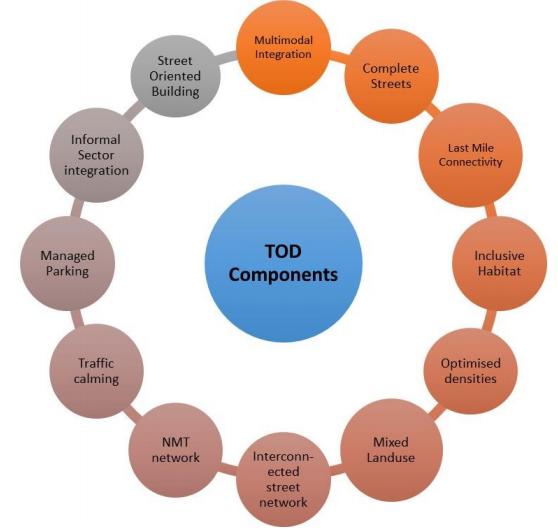
- Transit-Oriented Development (TOD) integrates land use and transport planning and aims to develop planned sustainable urban growth centers, having walkable and livable communes with high density mixed land-use.
- Plan of TOD:
- A TOD typically includes a central transit stop (such as a train station, or light rail or bus stop) surrounded by a high-density mixed-use area, with lower-density areas spreading out from this center.
- A TOD is also typically designed to be more walkable than other built-up areas, through using smaller block sizes and reducing the land area dedicated to automobiles.
- Need of TOD:
- Factors such as rapidly growing population, Urbanization, migration to cities, and traffic congestion etc.
- Benefits:
- Higher quality of life with better places to live, work, and play, greater mobility with ease of moving around, reduced traffic congestion, car accidents and injuries, reduced household spending on transportation, resulting in more affordable housing etc.
- TOD & Policy Initiatives in India: It is based on three pillars:
- Enable Transformation (From Private to Public Transportation):
- To assist in transformation of cities from private vehicle dependent city to public transport oriented development
- Accessible Public Transport (Promote Green Mobility):
- To promote the usage of public transport by making it accessible, encourage green mobility by encouraging people to walk and cycle and at the same time curb pollution and other negative impacts of motorization.
- Compact Walkable Communities:
- To create livable and affordable communities, which are compact and walkable.
- Enable Transformation (From Private to Public Transportation):
- Objectives of TOD Policy:
- Public Transport:
- To promote the use of public transport and reduction in private owned vehicles by developing high density zones in the influence area, which would increase the share of transit and walk trips and also result in reduction in pollution and congestion in the influence area.
- Reduction in Travel:
- To provide all the basic needs of work/ job, shopping, public amenities, entertainment in the influence zone with mixed land-use development which would reduce the need for travel.
- Road Network:
- To establish a dense road network within the development area for safe and easy movement.
- Inclusivity:
- To develop inclusive habitat in the influence area so that the people dependent on public transport can live in the livable communities within the walkable distance of transit stations.
- To integrate the Economically Weaker Sections (EWS) and affordable housing in the influence zone by allocating a prescribed proportion of built-up area for them in the total housing supply.
- Safety to Vulnerable Section:
- To ensure development of a safe society with special attention to safety of women, children, senior citizens and differently abled by making necessary amendments to the building bye laws.
- Planned Urbanization:
- To prevent urban sprawl by accommodating the growing population in a compact area with access to the transit corridor, which would also consolidate investments and bring down the infrastructure cost for development.
- Climate Friendly:
- To reduce carbon footprints by shifting towards environmentally friendly travel options for the line haul as well as for access and egress trips.
- Public Transport:
Biodiversity & Environment
Green Tax
Why in News
Recently, the Centre announced its plans to impose a "green tax" on older vehicles in a move to disincentive the use of polluting vehicles and to curb pollution in the country.
Key Points
- About:
- The Ministry of Road Transport and Highways will levy a green tax on transport vehicles older than eight years at the time of renewal of fitness certificate at the rate of 10% to 25% of road tax.
- The revenue collected through the green tax will be kept in a different account and will only be utilised for tackling pollution.
- Exemptions:
- Vehicles like strong hybrids, electric vehicles and those running on alternate fuels like CNG, ethanol and LPG and vehicles used in farming, such as tractor, harvesters and tillers will be exempted.
- Differential Taxation:
- Personal vehicles are proposed to be charged green tax at the time of renewal of registration certification after 15 years.
- Public transport vehicles, such as city buses, will be charged lower green tax.
- Higher green tax (50% of road tax) will be levied on vehicles being registered in highly polluted cities.
- Differential tax will also be charged depending on fuel (petrol/ diesel) and the type of vehicle.
- Justification of the Green Tax:
- Combat Health Hazards by Vehicular Pollution: The major pollutants like carbon monoxide (CO), nitrogen oxides (NOx), photochemical oxidants, lead (Pb), particulate matter (PM), etc. can have direct as well as in-direct impact, like reduced visibility, cancers, respiratory and cardiovascular ailments, increased mortality, morbidity and impaired pulmonary function.
- In Accordance with "Polluter Pays Principle": It is the commonly accepted practice that those who produce pollution should bear the costs of managing it to prevent damage to human health or the environment.
- For example, a factory that produces a potentially poisonous substance as a byproduct of its activities is usually held responsible for its safe disposal. Similarly Green tax is to be paid by the owners of pollution causing vehicles.
- Polluter Pays Principle is part of the 1992 Rio Declaration which gives broader principles to guide sustainable development worldwide.
- Carbon Pricing: India along with the U.S, China and Japan are some of the countries that are hardest hit by climate impacts. In order to mitigate the condition and reduce the GHG emissions, one smart approach is pricing Carbon such as introduction of Green tax.
- Carbon Pricing: It is an instrument that captures the external costs of greenhouse gas (GHG) emissions — the costs of emissions that the public pays for such as:
- damage to crops,
- health care costs from heat waves and droughts and
- loss of property from flooding and sea level rise.
- Carbon pricing ties them to their sources through a price, usually in the form of a price on the carbon dioxide (CO2) emitted.
- Carbon Pricing: It is an instrument that captures the external costs of greenhouse gas (GHG) emissions — the costs of emissions that the public pays for such as:
- Criticism of the Green Tax:
- Additional Burden: Imposing additional tax on Public transport such as buses will transfer the burden on the public which is already suffering income losses post pandemic crisis.
- There are already high rates of taxation on petrol and diesel, green tax will further spike the burden on vehicle owners.
- Spike in Inflation: Green tax will contribute in increasing the overall transportation cost which could surge the overall inflation.
- Additional Burden: Imposing additional tax on Public transport such as buses will transfer the burden on the public which is already suffering income losses post pandemic crisis.
- Other Initiatives to Curb Air Pollution
Way Forward
- Price Rationalisation: Prioritisation of hybrid and electric vehicles over carbon fuel based vehicles could be done by rationalising prices of such low emission vehicles rather than imposing additional taxes.
- Proactive Measures: Interventions like pollution-monitoring apps should be promoted.
- Coordinated Efforts: Fighting air pollution is a public issue and subsequently everybody’s responsibility. Therefore, along with measures like green tax, the need is for concerted and coordinated efforts with active involvement of all the stakeholders. This should include the Government (national, state and local governments), cities, community at large and individuals.
Important Facts For Prelims
Padma Awards 2021
Why in News
Recently, the Padma Awards for the year 2021 were announced on the occasion of 72nd Republic Day.
Key Points
- Awardees (2021):
- A total of 119 Padma awards will be conferred, including 7 padma vibhushan, 10 padma bhushan and 102 padma shri.
- Few Padma Vibhushan Awardees (out of 7)
- Shri Shinzo Abe (Japan), Shri S P Balasubramaniam (Posthumous), Dr. Belle Monappa Hegde (Medicine), Shri Sudarshan Sahoo (Art), etc.
- Few Padma Bhushan Awardees (out of 10)
- Ms. Krishnan Nair Shantakumari Chithra, Shri Tarun Gogoi, Ms. Sumitra Mahajan, Shri Ram Vilas Paswan, etc.
- Few Padma Shri Awardees (out of 102)
- Shri Gulfam Ahmed (Art), Ms. P. Anitha (Sports), Shri Rama Swamy Annavarapu (Art), etc.
- Background:
- The Padma Awards are announced annually on the Republic Day (26th January).
- Instituted in 1954, it is one of the highest civilian honours of India.
- Objective:
- The Award seeks to recognize achievements in all fields of activities or disciplines where an element of public service is involved.
- Categories:
- The Awards are given in three categories:
- Padma Vibhushan (for exceptional and distinguished service),
- Padma Bhushan (distinguished service of higher-order) and
- Padma Shri (distinguished service).
- Padma Vibhushan is highest in the hierarchy of Padma Awards followed by Padma Bhushan and Padma Shri.
- The Awards are given in three categories:
- Disciplines:
- The Awards are given in various disciplines/ fields of activities, viz.- art, social work, public affairs, science and engineering, trade and industry, medicine, literature and education, sports, civil service etc.
- Selection Process:
- Padma Awards Committee: The Awards are conferred on the recommendations made by the Padma Awards Committee, which is constituted by the Prime Minister every year.
- Awarded by President: The awards are presented by the President of India usually in the month of March/April every year.
Bharat Ratna
- Bharat Ratna is the highest civilian award of the country.
- It is awarded in recognition of exceptional service/performance of the highest order in any field of human endeavour.
- It is treated on a different footing from Padma Award. The recommendations for Bharat Ratna are made by the Prime Minister to the President of India.
- The number of Bharat Ratna Awards is restricted to a maximum of three in a particular year.

